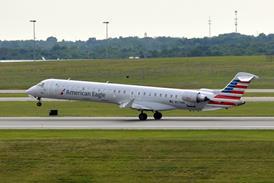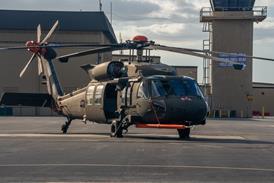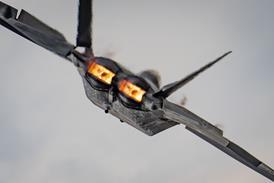REPORT BY MARK PILLING IN LONDON
As the first signs of market recovery appear, carriers are looking once more to marketing and branding programmes to help them build business and gain market share
It's official: the airline industry is beginning to move from crisis management to recovery management. As carriers begin to restore capacity to something like the levels that preceded 11 September's US terrorist attacks, the previous emphasis on cost-cutting is shifting back to the business of traffic generation.
This will mean restarting investment in marketing, product design and branding, and once more letting loose the airline marketing teams and their branding and advertising agency partners. "It is on the demand side of the equation once again where we will have a role to play," says Shailendra Kumar, head of brand valuation at London-based Futurebrand.
Before 11 September, despite the effects of recession in some markets, carriers were still investing in product development, especially in their premium services, says Gerrie Smith, senior aviation director at Futurebrand. For instance, many carriers were installing flat beds in their business class - a trend pioneered by British Airways - in an attempt to stay ahead in an increasingly competitive sector.
Marketing cutbacks
Work on new projects all but stopped following the terrorist attacks. "The phones went dead," says Smith. In a business where a high proportion of costs are fixed, marketing and advertising are always the first areas to be hit when times are hard. "It's an easy cut, you can understand it to an extent," says Gareth Andrew-Jones, a director at Identica, the agency tasked with re-branding Aeroflot Russian Airlines.
However, the financial community likes to see the resumption of activity geared towards increasing sales when the time is right. "A failure to invest in marketing is bad because it doesn't say much about an airline's view of the future," says Andrew-Jones.
The question for carriers is to identify if the re-emerging market is fundamentally different to the pre-crisis one - and to gear marketing efforts to match. "For some, the whole landscape has completely changed, particularly in Europe, as the low-cost carriers take hold," says Kumar. "Full-service carriers are having to re-evaluate and create a new proposition. However, brands remain as important as they ever were, and the brand platform will emerge as the biggest driver, particularly in the premium segment. The question is whether the low-cost model is the only model for short-haul flights."
The problem for full-service providers is that, unlike long-haul flights, where there is time to demonstrate a wide service range, it is more difficult to add value on a two-hour sector. For many, a seat at the front of the aircraft and a meal tray filled with smarter food and china has lost its allure. On the other hand, the brand promise from the low-fare carriers is simple: they are cheap.
"On the branding side, there appears little that full-service carriers can do in the short-haul market if there has been a structural shift in demand," says Kumar. One tactic has been to emphasise the use of major rather than secondary airports, with the latter often located a lot further from city centres. In brand terms, low-fare carriers seem to have tuned into a greater understanding of modern life-styles compared with their longer-established competitors.
Low-fare challenge
But any forecast of the demise of full-service carriers in short-haul markets would be premature, according to Alec Rattray, marketing and new business director of branding specialists Landor, which has a wide client base among airlines, and developed the identity for Asia's online ticket portal Zuji. "The low-cost road is definitely not the only one. There is still a very significant tranche of people who want to be called Sir."
That may be true, and in the current US climate, David Hedley-Noble, president of Public Image, sees a move away from the more casual aspects of low-fares branding and style code. "Customers do not want to see the golf shirt at the ticket counter. They want to see a very buttoned-up, businesslike service to show the airline is serious about their well-being," he says.
His Florida-based agency, which saw six airline clients stop branding and design work in the wake of the terrorist attacks, has just been hired by a medium-sized, low-fare carrier in the USA. "The brief is to help them be perceived as professional and serious, but not to the point where they become middle-of-the-road," Hedley-Noble says. With major carriers slashing fares, this airline realised its main product differentiation - cheap fares - was in danger of being eroded. "Previously it had an edge on pricing, but that is not enough unless you add branding to it."
As major carriers take on the low-fares challenge, the task for the marketing group is to persuade their finance colleagues to release the money for the marketing programme. Their problem is that proving a return on investment in marketing is not all that easy. The issue of brand measurement and valuation - to assess where a brand is positioned in the market and whether it is rising or falling - is also not an exact science.
However, "there are robust ways of valuing a brand," according to Future-brand's Kumar. "Brand valuation is more useful as a strategic management tool, partly to work out what the return on brand investment might be and how or where it adds brand value through the organisation," he says. The process involves taking baseline airline and customer survey data such as market share, customer loyalty and satisfaction ratings, coupled with targeted research that can measure brand value on particular routes and in specific classes. "We use the valuation process to see the drivers of demand, to see what makes people choose one [product] or the other," Kumar adds.
The brand asset valuator (BAV) research tool, developed by Landor parent Young & Rubicam, is used to understand how brands are performing. It is a powerful database comprising more than 100,000 consumers worldwide, and featuring thousands of brands that can be manipulated to assess the views of a wide range of audiences towards an existing brand. Landor used it during the rebranding of bmi british midland last year. Planner Hugh Bateman explains that the tool is especially useful for understanding the dynamics of the marketplace and demonstrating how a brand is viewed over time.
Overall, BAV analysis shows that airline brands are not seen as all that different from one another. "The problem is that there are few tangible product dimensions," says Landor's Rattray. For instance, most passengers do not see the difference between one aircraft and another. "It's then that small items become important," he adds.
Although they are few in number, there are carriers active on the branding front out of choice. Aeroflot has sustained its work with Identica on its complete brand overhaul - announced in July - while two other European flag carriers with long-standing brands are preparing similar programmes. In Latin America, the Public Image-led 30-month rebranding project for Grupo Taca's five jointly owned airlines has continued through the industry's malaise. UK charter carrier Monarch has kept a firm grip on costs for its recently unveiled new brand. By phasing it in over time, total launch costs were under $150,000.
Other rebranding projects owe less to strategic choice and more to necessity. In Belgium, there is the case of SN Brussels Airlines. This is a move by Delta Air Transport, which took over much of Sabena's European network after the flag carrier's demise, to launch itself quickly and cheaply. The identity will maintain the old Sabena tail fins, and retain Sabena's old SN code, but see the new name painted on the fuselage.
The creation of Swiss
Crossair needed a new brand for the airline it was building after the bankruptcy of Swissair. It awarded the job to create a brand and a new look for the new Swiss national airline to Wink Media, the design agency owned by the publishers of international lifestyle magazine Wallpaper. The name is now simply Swiss, but for legal reasons this cannot be used until the start of the winter timetable. According to Wink creative director Tyler Br–l‚, Swiss is designed to be an "elegant, understated" brand. "We wanted an instant classic, with instant recognition," he says.
Swiss has set itself lofty goals: "The brand will differentiate itself from other airline brands and transcend its category. By building a meaningful, emotional connection with customers, the brand will become one that they love and want to be a part of. No other airline has been able to achieve this."
In the world of branding, such ambition is laudable - but it will be greeted with much scepticism. Brand valuation tools may well prove in years to come that Swiss has done something many others have sought to do. But its success, or otherwise, demonstrates that despite the current downturn in spending, more airlines than ever believe that branding is a central element of their business strategy.
Source: Airline Business























